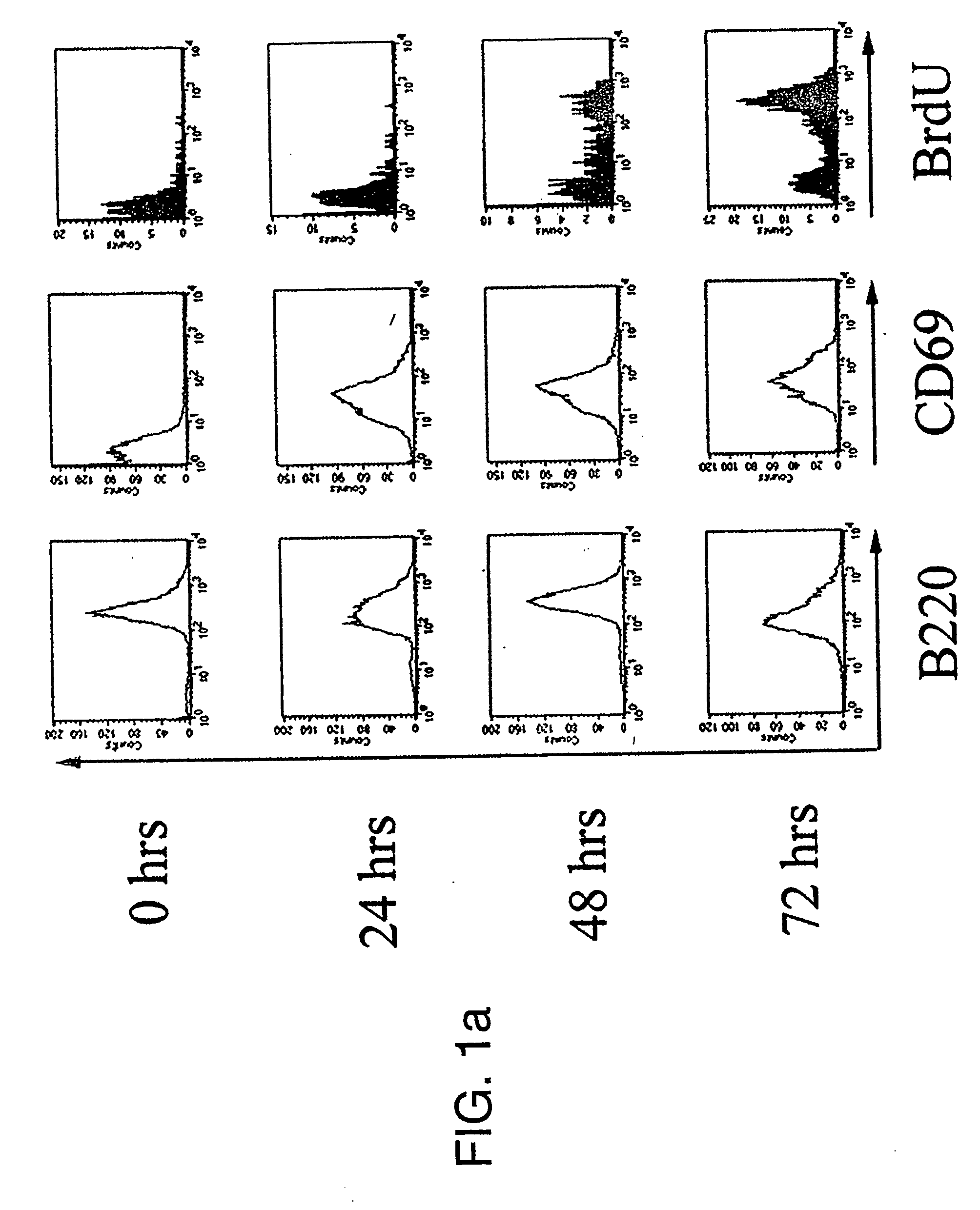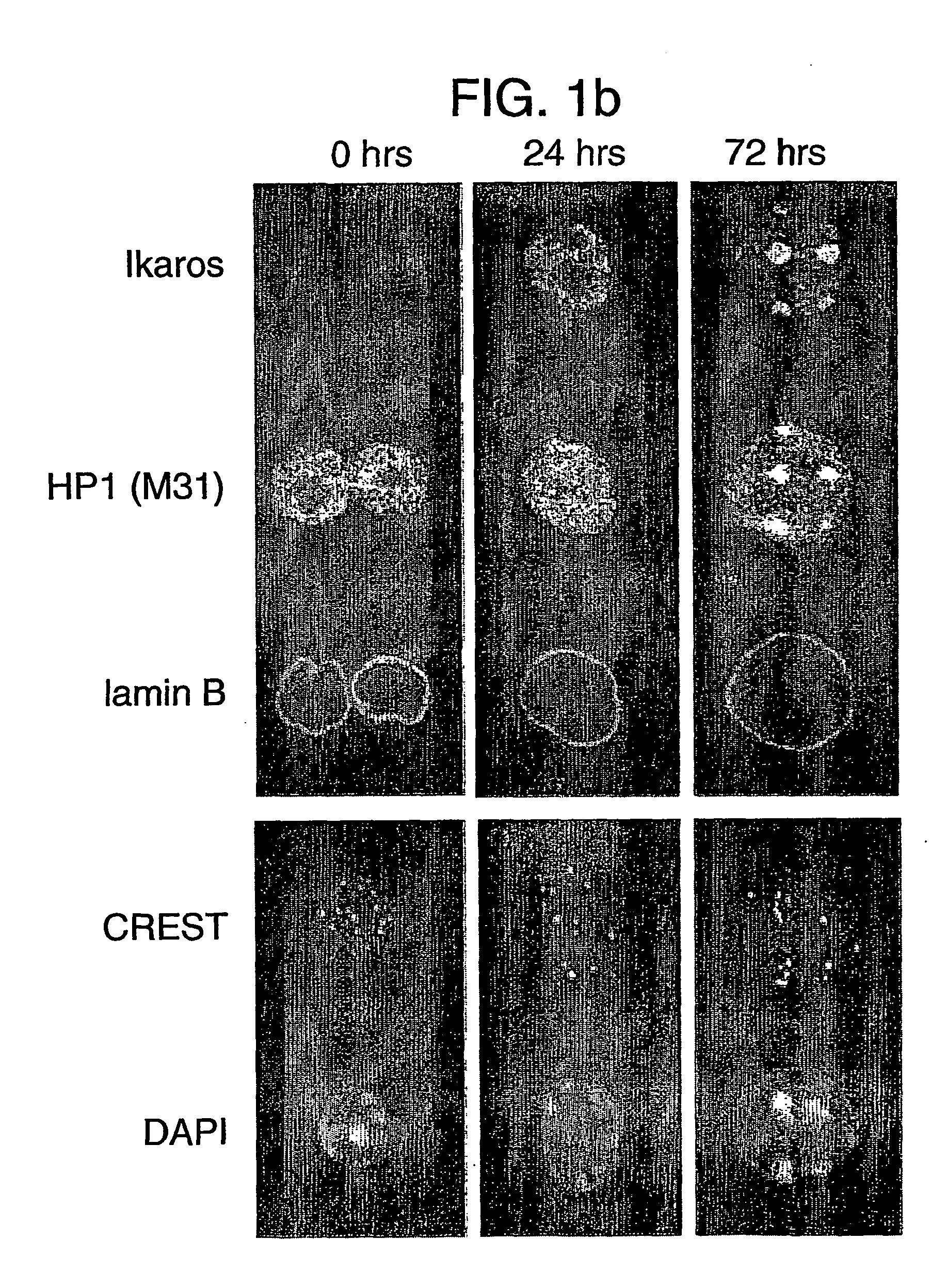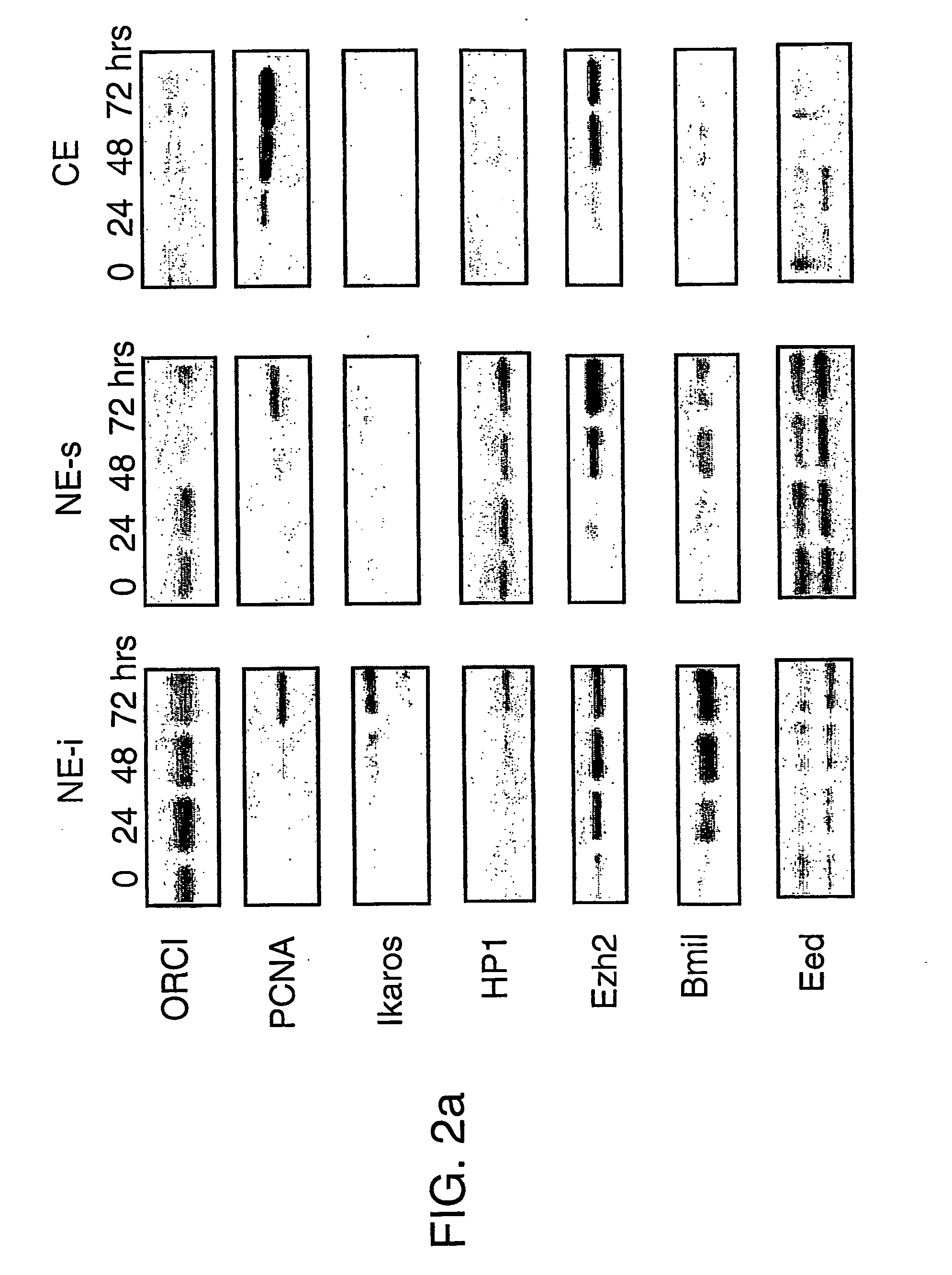Nuclear transfer nuclei from histone hypomethylated donor cells
a donor cell and nucleus technology, applied in the field of cell and developmental biology, can solve the problems of limiting the repertoire of genes that are expressed in a given cell type, affecting the economic and medical use of cloning technology, and affecting the efficiency of nuclear transfer
- Summary
- Abstract
- Description
- Claims
- Application Information
AI Technical Summary
Benefits of technology
Problems solved by technology
Method used
Image
Examples
Embodiment Construction
SUMMARY
BACKGROUND
[0154] Covalent modification of histones has been proposed as a possible mechanism of epigenetic inheritance based on observations that different patterns of histone methylation and acetylation are predictably associated with distinct chromatin and transcriptional states. To investigate their role in transcriptional memory, the extent of histone H3 and H4 modification in quiescent (G0) and actively cycling mouse B lymphocytes was examined.
Results
[0155] We observed a generalised reduction in histone H3 methylation at lysine residues 4 (H3-K4), 9 (H3-K9) and 27 (H3-K27) in purified G0 splenic B cells and the absence of heterochromatin-associated proteins HP1β and Ikaros at centromeric heterochromatin. Mitogenic stimulation resulted in a rapid increase in methylation at all three histone H3 residues prior to the onset of DNA replication, coincident with an up-regulation and global redistribution of Polycomb group proteins Bmi1, HP1 and of the Ezh2 and ESET MTases....
PUM
| Property | Measurement | Unit |
|---|---|---|
| time | aaaaa | aaaaa |
| density | aaaaa | aaaaa |
| density | aaaaa | aaaaa |
Abstract
Description
Claims
Application Information
 Login to View More
Login to View More - R&D
- Intellectual Property
- Life Sciences
- Materials
- Tech Scout
- Unparalleled Data Quality
- Higher Quality Content
- 60% Fewer Hallucinations
Browse by: Latest US Patents, China's latest patents, Technical Efficacy Thesaurus, Application Domain, Technology Topic, Popular Technical Reports.
© 2025 PatSnap. All rights reserved.Legal|Privacy policy|Modern Slavery Act Transparency Statement|Sitemap|About US| Contact US: help@patsnap.com



